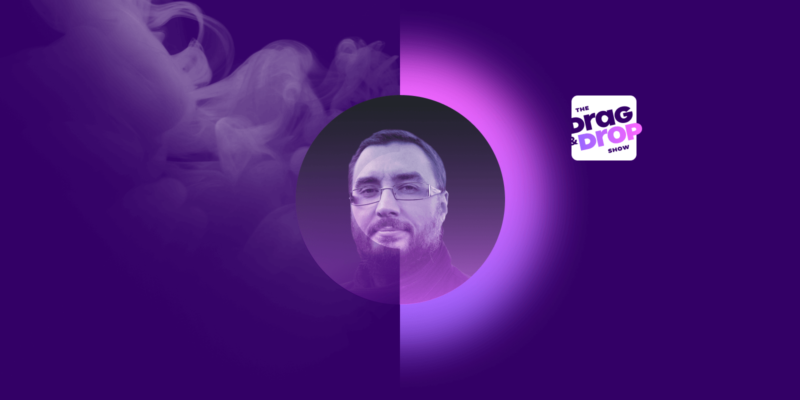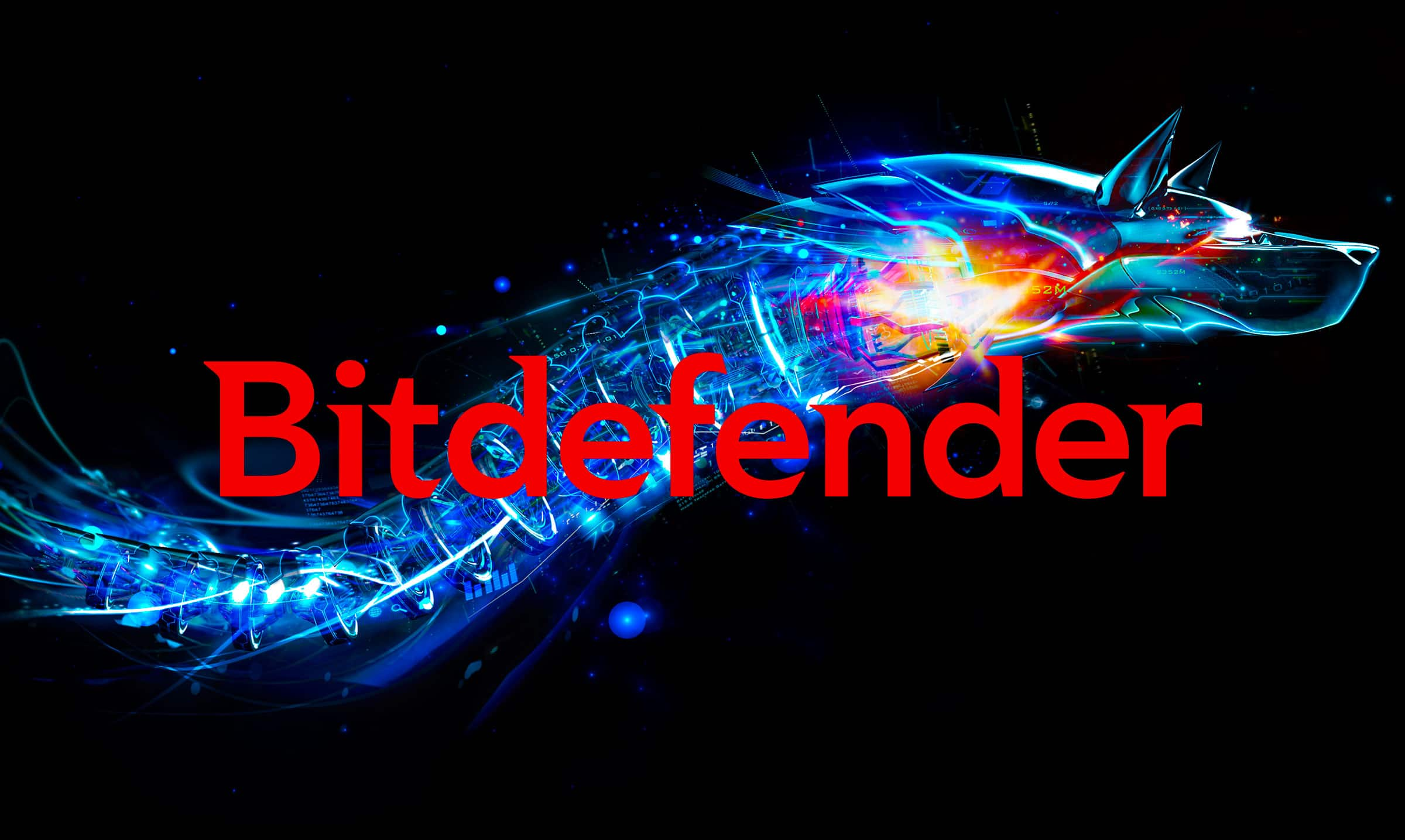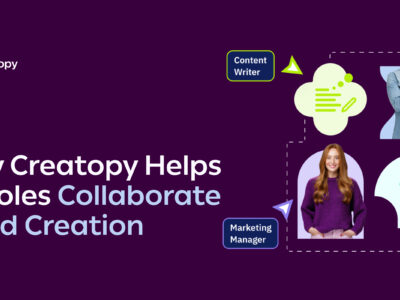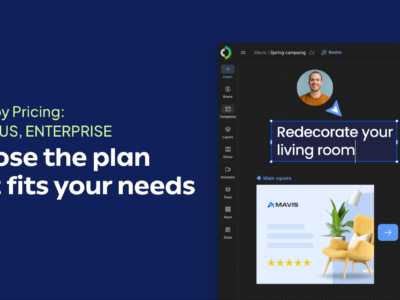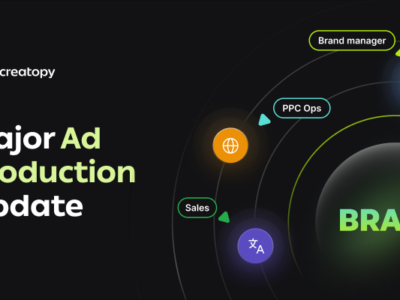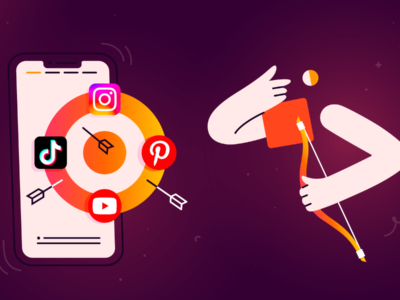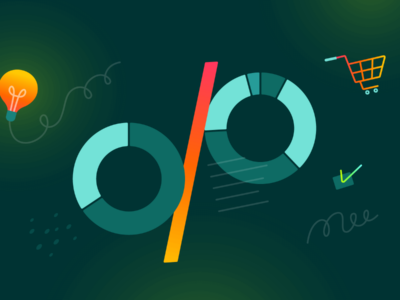When it comes to connecting with customers, there are few things more valuable than trust.
In the bygone days of advertising, trust was associated with people in positions of authority: CEOs for business, doctors for health, and marketers for purchases. No longer. Nowadays, trust must be earned over time.
Branding is an essential part of establishing trust. With customers demanding more from companies in terms of transparency, ethical practices, and legitimate brand promises, we all have to pay closer attention to what it means to build authentic relationships that work. And at some point in the journey, that might require a rebrand.
Our guest today comes from an industry that doesn’t get much attention in terms of rebranding: cybersecurity. This, to me, is surprising since both concepts deal with trust as a currency. Let me explain.
Trust is a major element in cybersecurity. There’s a lot to trust: the company, the people, the data, who’s got access to that data, and if they are doing the right thing.
It’s an industry where cybercriminals can forge a legitimate company’s identity in order to convince customers to share their precious data. By associating their malicious ways and bad intentions with visuals and content that don’t belong to them, they create a lack of trust in the brand itself. Branding, as an element of trust, is critical in cybersecurity—it teaches consumers to first recognize these illegitimate websites, emails, and assets and then how to protect themselves from malicious sources.
It’s no secret that cybersecurity is a field that’s close to my heart. I’ve dedicated the past few years to helping the infosec community through ethical marketing that builds bridges across people, organizations, and industries.
That’s why I was so excited to hear from Ionuț Băibărac, Manager of Brand Design and Production at Bitdefender, a global leader in cybersecurity. Almost 10 years ago, Ionuț and his team underwent a massive rebrand that helped Bitdefender establish itself as one of the world’s most innovative IT security software vendors.
In episode five of the Drag & Drop by Creatopy, join Ionuț and me as we dive into how to draw from your local roots while creating a global image, why spending two years to align assets across the company is actually not that long, and how to build the flexibility you need to roll out a rebrand at a large scale.
Introducing Ionuț Băibărac
A powerhouse of technical knowledge, Ionuț Băibărac has been with Bitdefender since 2010.
As the Manager of Brand Design and Production, he oversees the development of brand guidelines and assures their compliance across employees and partners worldwide. That’s saying something, considering the fact that Bitdefender has almost 2000 employees spread across the globe, and over 38% of the world’s security solutions use Bitdefender technology to protect millions of people and devices.
In this episode, Ionuț provides an in-depth view into how the Bitdefender rebrand happened a decade ago, one that hopefully helps you see the world of cybersecurity with different eyes.
Stuff I Was Curious to Find Out:
- Why rebranding is such a massive undertaking for a company (02:59)
- What triggers a rebrand—is there an aha! moment or is it something that happens organically? (03:43)
- How they knew it was time for a Bitdefender rebrand, more than a decade ago (05:17)
- How they supported the rebrand and maintained a consistent but evolving brand identity over the past 10 years (09:06)
- What the visual representation update workload looked like—expectations vs. reality (12:41)
- If the rebrand changed the company’s identity and the story that it told (16:45)
- Who the key people involved in the rebranding process were (19:54)
- How to internally align a fresh brand identity in a big company, across employees and partners (21:52)
- How customers interpret brand consistency and inconsistency (24:27)
- What the specific risks and considerations of rebranding in cybersecurity are (27:04)
- How the Bitdefender rebrand trickled down from main headquarters to partners while taking into account localization (30:01)
- What the unexpected challenges that come with a rebrand in cybersecurity are (32:20)
- How to facilitate growth during a rebrand in your team and the people that you work with (38:15)
- The value of brand identity in today’s context and, precisely, in the cybersecurity industry (41:16)
What You Can Learn From This Episode:
- How a growth spurt can indicate a need for a rebrand that happens naturally and organically (03:03)
- How introducing a symbol in the Bitdefender rebrand helped consolidate their identity (05:25)
- How to draw from your local roots but create a global image that’s relevant to multiple cultures (06:43)
- What the best mistake they made was and how that led to brand consistency (09:27)
- How long the Bitdefender rebrand implementation took and why change comes from the inside (13:02)
- The two things people involved in a rebrand have in common, from vision to implementation (20:24)
- How to minimize risk by basing your rebrand on actual data, numbers, and educated choices (27:47)
- How templating is something that actually helps you get work done and helps you do it well (32:20)
- Why consumers like to associate themselves with strong, self-confident brands that embrace their values (41:56)
- How emotional involvement can be a differentiating factor for customers in difficult times (44:52)
- How to keep clarity top of mind in a rebrand process (46:59)
Key Takeaways:
1. Change comes from the inside
There’s no specific formula that tells you exactly when a rebrand should take place in the lifeline of a company. It can be at the culmination of a growth spurt, or it can happen when sales start going down. Whether it’s an aha! moment or it comes slowly, organically, as clues in shared daily thoughts and ideas, rebranding comes from an internal need for a company to better reach their audience and to better present their products. Once all that change and growth starts happening inside a company, it can trigger a need for transformation, innovation, and transition to the next step, one that best portrays the company, its product, goals, and values at the current moment.
2. Brand consistency is key
People need a representation of something abstract, so they can wrap their minds around it—that’s where consistent branding comes in. The whole concept of brand consistency is predicated on trust. For people to trust you, they have to feel like they know you. For that to happen, they need to be aware, recognize and remember you. And in order to do that, you have to show up in a consistent way. During a rebrand, make sure you develop standards for brand consistency, online and offline. That includes brand guidelines, internal synchronization, and approaching content with brand consistency in mind. At the same time, don’t discourage new ideas. It’s how people tell you they need something new or better for their specific activity. Instead, adapt these ideas to your branding, and we make sure to meet their requirements.
3. Expectations vs. reality
A rebrand takes place when a company realizes that it needs to level up. Before that happens, you have a chance to properly set your expectations about how rebranding works. Know that you and your team are going into this process for the long haul. This is the perfect time to carve out some mental space where creativity can bloom and some real-life resources for brainstorming, testing, fine-tuning, templating, and holding everyone accountable. It’s a complex process that can quickly become overwhelming, but not if you enter into it with the right mindset. Right from the start, be aware that mistakes are going to happen. Being able to work with imperfection, to admit and take ownership of it, to share why and how it happened and why it shouldn’t happen again, will help you see progress a lot faster. It’s an incredible process that will make your branding and brand experience match the quality level of your product.
Transcript:
Andra Zaharia: So, Ionuț, welcome to the Drag & Drop Show. I am super excited to have you here with us!
Ionuț Băibărac: Hello, Andra! Thank you very much for your invitation. I’m happy to be here!
Andra Zaharia: I am really looking forward to our conversation because you come from an industry that doesn’t get much attention in terms of rebranding and talk in conversations around brands and things like that simply because when you say cybersecurity, most people feel kind of like, “Wow, that’s really high tech, that’s very abstract for me, I don’t know anything about it.” So, you know, I feel like the cybersecurity industry lives in its own place and time. But I’m really glad that we get to talk today and kind of capture a lot of those insights and a lot of what’s going on in that area brand-wise, simply because, well, I’m biased, I’ve been working in the industry for a long time, but also, I know that there’s so much going on there. And there is such a big challenge to build a brand that really captures people’s attention and also emotions. So, again, I’m excited to dig into all of this today with you. So, I wanted to start with a really straightforward question, you know, to look at the big picture a little bit and ask you, why is rebranding such a massive undertaking for a company?
Ionuț Băibărac: Yeah, well, when a company decides to rebrand itself, whatever its domain – cybersecurity or whatever – it usually means that the company is ready to step to the next level in its evolution, or it needs to better address and reach its audience. Once that’s established, months of studies and research will begin, as you need to find out where you are as a company, how you are perceived, what expectation your audience has from you, and who is your audience. If the findings are surprising, it means that you may need to rediscover yourself as a company, which implies research, time, money, and a lot of human resources.
Andra Zaharia: That’s very interesting! And I wanted to just circle back a little bit. I like how you emphasized the fact that a rebrand happens when there’s this kind of growth spurt, or when a company kind of realizes that it needs to level up in many ways. To me, that’s very interesting, because sometimes, when you look at it from the outside, it sometimes looks like it’s just a visual refresh, but we both know that there’s so, so much more to a rebrand. So, it’s interesting that it kind of marks this maturity level. What do you think triggers it? Is there any kind of moment when you realize, like, “Hey, we need to do something about this.”?
Ionuț Băibărac: No, I just think that this is a natural evolution of the company. I think it starts from an internal need for people to better reach their audience and to better present their products, and so on. So, I think it’s mostly an internal need.
Andra Zaharia: I love that because, you know, everything that I saw so far is kind of the same. It’s kind of a process of redefining – not redefining, maybe polishing and clarifying a few things, and getting people aligned around the same kind of ideas and values or just restating and building on them further. And it’s very interesting to see this, especially with Bitdefender because, you know, it’s been almost a decade since Bitdefender did this massive rebrand that reshaped the company’s identity. So I was very curious, you know, if you could walk us back just a little bit, to kind of do a little time jump and see how it all started?
Ionuț Băibărac: Yeah. It was very early in Bitdefender’s history. Bitdefender was actually born in 2001 – 10 years earlier – but we were just beginning our journey. And I was just getting hired a year before, in 2010. I was informed about rebranding a few months before it came out and it was all very new for all of us because we didn’t have the know-how. An agency was hired, of course – it was Brandient – and they were handling most of the rebranding process. The best part of this was that the change was complete. Everything was new: logo, fonts, colors, everything. And of course, we had a new element, an avatar – the black wolf Dragon – and this was our first avatar. I think that was the most important change for the brand – introducing a symbol, an element – and the connection between the Romanian roots and the world of IT. The Dragon was the ancient banner used by our ancestors, the Dacians, in battles. And now, we use it in the battles against cyber threats.
Andra Zaharia: I love that element of mythology. Branding has so much to do with symbolism, with all these values that we connect with, as humans, simply because this has been built into our evolution. Like, millions and millions of years ago, we used to have symbols and these have persisted throughout history. And, you know, what I especially found interesting about how Bitdefender went about this, and what happened 10 years ago, is that this is a very bold statement of drawing from your local roots and creating this global image, especially in cybersecurity where things are very abstract, and they’re very logical, and everything that goes with that. And tying this element into it, to me, is what helped Bitdefender really stand out in the cybersecurity industry and not only that. I mean, it was a big move a decade ago.
Ionuț Băibărac: A big move and a very inspired one because this was the easiest way for us to show people that, “Hey, we are Romanians, we are proud of our roots, and look what we can do!”
Andra Zaharia: Absolutely! And you mentioned also something that I think is really important to the entire rebrand conversation. You mentioned that it was a period of intense growth for Bitdefender as a company, internally, and in the relationship with customers as well. So, to me, a rebrand really emerges as an opportunity for people to kind of work together and to figure out how to work together even better, and how to align properly. The alignment theme, I feel like it keeps coming up. Especially, you know, there’s this kind of visual representation, the visual side of it, the UX side of it, and then there are the processes that happen in the background to make all of this happen. So, clearly, that was kind of the point where it started coming together, and everyone kind of rallied around these symbols and these new propositions towards the audience – this new way of presenting what Bitdefender does, and what Bitdefender is, especially. So, how did you support the initial rebrand throughout these years? It’s been a decade, but in many ways, it still feels very familiar and close, especially for us who work in the industry and are very familiar with this. So, what happened throughout these almost 10 years ever since?
Ionuț Băibărac: Yes, it’s very close for me also, because it was my first rebranding and it had a very big impact on me. In the beginning, it was very simple, in theory. We had some initial stages to go by. First, we needed to change all the materials, to discard the old branding completely. After that, our main goal was to do anything in our power to maintain and support the new branding. Of course, this was and it still is challenging. I was a web designer in Bitdefender when we first received the new materials from Brandient and it felt like getting new toys. It was a very exciting time. We started to play – no pun intended – with the new avatar a lot. Of course, we weren’t allowed to do this, but we did it anyway because… Chaos. Fortunately, this was the best mistake we could have done.
Andra Zaharia: That’s interesting! In what way?
Ionuț Băibărac: Because this is how we learned the importance of brand consistency. After that, we began building templates for all kinds of offline and online materials. But, back then, we used to change them a lot, also, because new types of needs and materials constantly appeared. Bitdefender was a fast-growing company and this was something pretty normal for us. But, we welcomed the challenge, the toys were still new for us, and, at the same time, the brand evolution started to make sense for me. In addition to the new materials from Brandient, we also received a website redesign and new box shots for our products. With time, we started to update this internally with many, many versions for the website, to test. Personally, then I took over the design of the box shots, and I’m doing this even today.
Andra Zaharia: To me, I think that’s a very interesting element. You know, we talk about only in businesses, and it’s now like software as a service, and we talk about all these things. But, to me, you know, what’s interesting about the cybersecurity industry specifically is that we still have product box shots simply because – and I want to emphasize this because probably not many people know it – people need, generally, a visual representation of something that’s abstract, so they can wrap their minds around it. So, to me, this really stands out, you know, from everything else that we’re used to – to SaaS websites and things like that – box shots are still a big thing in the cybersecurity industry. You mentioned that you started building templates, and basically gradually started to formalize this entire process. What was it like to work with people at the time and figure out, “How are we going to do this?” because there was a lot of experimentation and gradual growth and kind of tight feedback loops. What did it feel like, at the time? How did you manage to do all this work and refresh all of these assets across so many channels and not feel overwhelmed? And, you know, not feel stuck on that? Because it’s such a big load of work that we don’t really see on the surface.
Ionuț Băibărac: Well, it was fun for us at the beginning because we didn’t need to go back to the old materials, we just had to discard them and start building on the new ones. So, it was very nice and very fun for us, because we just built – we continued to build – new things. We were constantly building new things and I think this is every designer’s dream: to constantly build new things using new imagery and all of this cool stuff. And if I remember correctly, it took two years to change all the materials received from the agency and two more to understand that we already needed a brand refresh. So, because we were about five designers then, we kind of split the work. One specialized in landing pages and website, the other specialized in banners or any other online material like emails, product messaging, and all of that. So it was fun for a couple of years.
Andra Zaharia: Absolutely! It sounds like a lot of work! When you started changing all of these things, how long did you think it would last versus how much it actually ended up lasting?
Ionuț Băibărac: I didn’t think of a timeline back then. I was just, “Okay, let’s get this done.” Because all of these things were kind of new for us all and we were just buried in work and we didn’t have time to think when we will finish this, how much time we will invest, and we didn’t take into consideration the new things that were to come – all those new types of materials. And yeah, that actually was a very nice surprise for us. And, as I said, two years to change all the materials from the agency, it’s actually not a long time.
Andra Zaharia: It’s not. It sounds like a long time, but it isn’t it, that’s true. And I love that you mentioned this, and I think this is so important! For people who have never done a big rebrand or never been part of one, by listening to you and to other guests that we have this season, they have a chance to properly set their expectations and to know that they’re going to go into this process knowing a few things that definitely need to happen. But it’s also important to carve out some space – a mental space – and some resources to be able to accommodate all of the new things that are bound to happen without you being able to plan them at the beginning. So, I think that this is so important! And the second thing that I took away from what you just mentioned, is that to deal with this overwhelm and this complexity, and all of these requests that stack up, you need focus, and you need ownership, because when you have ownership on a specific type of asset or specific channels, then you’re going to be able to fine-tune your process, to be able to make progress on this a lot faster. And I also think that this is a great way to get work done when you have to cover so many things as fast as possible, obviously. And to make sure that you maintain quality because that’s a huge thing.
Ionuț Băibărac: Yeah, that’s for sure!
Andra Zaharia: Just to circle back a little bit on the topic of identity, I wanted to ask you a little bit, how does a rebrand change the company’s identity and the story that it tells? Because I feel it does this externally, as well as internally. So I was curious, what’s your perspective on this, you know, being there and doing the work?
Ionuț Băibărac: Well, I think change is good, but a rebrand, for me, doesn’t necessarily mean a change of identity or the story tells. As I said, it’s more like a natural evolution of the company, it’s a refreshed identity, and the continuation of the story tells. It’s another step forward for the company, and these are things that come mostly from internal needs. You want your external audience to better understand you as a company and your products, to reach them more efficiently, and to show them you’re a constantly evolving company in a constantly evolving environment. So change in a rebrand doesn’t mean necessarily change as we perceive it. It’s more like a continuation.
Andra Zaharia: Oh, that’s a very interesting perspective. And really a new one, because basically, it marks just kind of a maturity-stage step where you can see how a company reaches different maturity levels. Another guest was saying – and I’m curious to know, what you think about this – he mentioned that a rebrand happens when all of that change and growing up happens inside a company, and then it bubbles up to the surface in the form of a rebrand. What do you think about this perspective?
Andra Zaharia: Well, I think it’s a confirmation of my belief that the need for rebrand comes mostly from internal needs. Because I think people that work there know best when this needs to happen. It doesn’t mean that, I don’t know, C-level has to bring this up to the table, “You know, we need to do this rebrand because I hate the look of our logo” and so on. It just happens out of needs.
Andra Zaharia: So I love that it’s kind of this organic thing. It’s this organic process that starts when people start to question like, “Hey, where are we going? How can we make this better? How can we kind of meet our customers with something that they can pinpoint and know exactly that it’s for them and it’s a specific solution to a specific need that they have?” And this is super important in cybersecurity, because people have a difficult time understanding why they need to act proactively simply because it’s such an abstract field, and we just, as humans, generally, we react mostly, not act proactively – not before it happens. So, moving them from one side to the other, and kind of building that relationship with them over the years, so you know that you have their trust, that, to me, is kind of the pinnacle of what we should try to achieve, especially in this field. Particularly in this field. So you talk a lot about people and obviously, you know, I’m a firm believer that people buy from people. So, the people who were behind the scenes are absolutely essential. When we’re talking specifically about a rebranding process, who are the key people usually involved in the process? Because I bet there are roles and types of people that we don’t usually associate with this rebranding process, but they are instrumental to it.
Ionuț Băibărac: Yeah, I think it’s very hard to pinpoint people in such a big process. I think, as in every long-term process, people are people with vision and focus. From an organizational point of view, we’re talking about the C level, the brand team, the marketing people – maintaining the brand is hardly a one-team effort. First, the brand needs to have a vision or a road that is expected to have. Then, the brand is built around that vision and direction. And after this is done, and everyone is happy, implementation starts. Implementation is spread across multiple teams, of course, from online materials, offline materials, to product and documentation. So, I think it’s safe to say a rebrand is a company effort. It’s very, very hard to pinpoint key people.
Andra Zaharia: But I love that you mentioned that they have this in common. So, they have vision and focus. I think that this speaks more about the types of people that you need to pull this off, than naming roles. Because to me, I think that mindset is a lot more important than what your job may be, or your role may be at any given point in time, simply because that can change. It’s the way that you bring your gifts and your abilities and knows how and expertise to the table can have different forms, but at the end of the day, it matters that you bring them, and that you actually do something with them. And continuing a little bit on this, I also wanted to ask – so, for those who don’t know, Bitdefender has almost 2000 employees spread across the world, and more importantly, over 38% of the world’s security solutions use Bitdefender technology to protect millions of people and devices around the world. And that is absolutely huge to think what it means to get people aligned in all of this. So, how do you align, internally, a new brand identity in such a big company?
Ionuț Băibărac: Indeed, this is a very challenging and continuous process for us. I try to make myself and my team available for anyone with questions regarding brand and brand implementation. And I often have calls with people that want to understand how to implement a brand or they come with their own new ideas for branded materials. Of course, not all ideas match our brand, but it doesn’t matter. It’s how people tell you that they need something new or better for their specific activity – and we make sure to meet their requirements, but correctly branded. This is very important, to always listen to internal needs. Otherwise, people will try to find their own solutions and you risk losing brand consistency. We also have an internal brand portal that hosts all brand guides, imagery, templates, that of course, we try to keep up to date.
Andra Zaharia: Very, very helpful. So, first, having this repository is absolutely essential, but getting people to use it, that’s an entirely different challenge. And I thought that this was very interesting. I love how you mentioned that people will find a way to get done what they need to get done. I’m a content creator and I work with a lot of designers, with UX specialists, with conversion rate optimization specialists, and all kinds of specialists, because obviously, content is kind of plugged into everything, and everything has to work together. So, I know exactly what you mean when you say, you know, you can give people a lot of templates and things like that, but they need to understand why that’s important – why it’s important to respect a certain standard or use things properly, because what the user sees from the outside, what the customer sees, is so incredibly important. So, I just wanted to ask you a quick question: what role do you think consistency has? What happens, actually, when a user doesn’t see something consistent? What’s their feeling? What’s their reaction to that?
Ionuț Băibărac: If brand inconsistency happens so that a user can actually see and perceive, that’s, I think, one of the worst mistakes the brand team can do. Of course, there are always mistakes in this process, mistakes that you didn’t think of, mistakes that just happen. But mostly, you can control them in a way or another. But if you make a mistake that the users can perceive, that’s a very big mistake. I think that you just have to try to correct it very fast.
Andra Zaharia: Oh, I love that idea. You know, I love that you acknowledge the fact that you have to work with imperfection to a certain level, and being able to remedy that and being able to explain to people why this happened and why it shouldn’t happen again, and learning from past mistakes, that’s an incredibly valuable process. And I just wanted to add a quick idea here. You know, I think that inconsistency hurts a brand because people might lose a little bit of trust. And plus, we work in an industry where, basically, cybercriminals are trying all the time to use other companies’ identities and forge them, actually to create a false impression that they can be trusted when the websites are malicious, they’re infected with malicious code, and they’re basically trying to just capture their trust in a malicious way with bad intentions. And I think it’s even more important to get people to recognize what a true brand identity is, because to spot a phishing email, who’s trying to get you to click on things and get your data by saying things like, “Hey, you received a package and you weren’t home. We couldn’t deliver it.” And to know that that’s not a legitimate email, you have to know what a legitimate email looks like, you have to know what a legitimate website looks like, what the logo is, what the footer looks like, and things like that. So, to me, branding as an element of trust is even more important in cybersecurity – and not just in cybersecurity, but generally, because it teaches people to recognize legitimate websites, emails, and other assets from illegitimate and malicious ones – which, obviously, cybercriminals are trying to forge constantly. So, I just wanted to add that because we’re on the topic, just capturing a moment to talk about cybersecurity education – it’s always a good time to do that. Talking about risks a little bit, and going back to the core topic of the show, what are the risks a rebrand involves?
Ionuț Băibărac: Yes. For us to talk about risks that a brand involves, first, we have to take into consideration that a company’s decision to do a rebrand should be based on real data and real needs, both internal and external. I think, actually, I see no risks in a rebrand done correctly, based on actual data, numbers, and educated choices. With the rebrand, what you actually do is offering a refreshed, modernized, and correct perception of your company to your audience. You evolve with your audience and market, and if you fail to understand this, of course, the rebrand will fail. Other than that, I don’t see any real risks.
Andra Zaharia: That’s very interesting. And I’m very curious, what kind of data do you look at? Like, broadly speaking. And how do you make sure that you interpret that data correctly? Because data – I remember I saw this quote, and it stuck with me that, ‘if you torture data long enough, it’ll tell you whatever you want to hear.’ So, how do you make sure you don’t torture it?
Ionuț Băibărac: Well, I think the most important data you should rely on is the data that shows you your brand awareness, the level of your awareness, the brand elements that people acknowledge and recognize. And also, I think the most important data that you need to have is about your audience. You need to know who they are – not exactly who they are, but to have a very good idea and picture of your target persona. And with that, to try more and more to approach them and to have a more direct approach to them.
Andra Zaharia: To be specific and be highly focused. And that focus always comes from intimately knowing your customers and their needs, and what they expect of you and what they need from you. Plus, you know, as a big company, Bitdefender also has tons of partners that need your help. So, how do you work to ensure that those partners also align with you, even though they work in their own companies, and they have their own priorities? How do you make sure that that collaboration goes smoothly?
Ionuț Băibărac: Almost the same as we try to do it in Romania, in Bucharest. We use the portal and we have a lot of discussions with main offices throughout Europe and the US. Of course, we take into consideration the localization for the specific market. We don’t really do localizations for them, but we try to adapt the brand in the brand’s limits, so that we be on point for them, for the customers, on their respective markets. Because not every market and not every user is the same.
Andra Zaharia: Absolutely! Plus, the cultural values are very different. Even how the text is laid out on a website can be incredibly different and be read from right to left and not the other way around. So that makes a world of difference to how things look and how they feel and what the entire experience of it is. And I’m glad you brought up the localization part, which is such a complex process. I’ve worked on smaller localization projects than the one Bitdefender has, and it can be a little overwhelming. You want to make sure that you don’t hurt anyone’s feelings, that you don’t infringe on anyone’s cultural values and things like that. So it’s a fascinating process, but a very difficult one to do right. And I wanted to ask on this topic, could you share some other unexpected challenges that happen when you start a rebrand? I bet that you had some of those experiences and I’d really be keen if you could share them with us.
Ionuț Băibărac: Yeah. Actually, with our initial rebrand, the most unexpected challenge during this process was us. Back then, we were three major active designers involved in this process, and we were so excited about the rebranding that we each tried to bring part of us into it. And soon, our dragon went through water, fire, smoke, you name it – through barbecue. Fortunately, we woke up very fast and used the correct dragon. And so, we learned that internal synchronization is very important. We then built an internal server with up-to-date materials and made it available for everyone so that we can keep all the materials updated. And anyone could use the templates or the specific campaigns we did.
Andra Zaharia: And, you know, I just wanted to mention a quick thing about templates. To me, they’re not just a tactical element, they’re not just a way to ensure brand consistency. To me, templating is something that actually helps you get work done, and it helps you work done well. It imposes and cultivates a certain quality standard that a company like Bitdefender really needs to make its branding and its brand experience match the quality level of its product. Because, you know, that’s one of the goals, right?
Ionuț Băibărac: Yes. And also, speaking of templates, it is very important that you use a tested template, that you perform a lot of tests to see how a user interacts with the template, so you know what the best decisions are to place product box shots, price pattern and so on.
Andra Zaharia: Yes, a very, very helpful reminder here, because how we create things, as marketers, people that generally are involved in communication and shaping all of these things. And the way that customers actually use them is sometimes entirely different, isn’t it?
Ionuț Băibărac: Completely different. We had many, many templates, and many tests on emails, website, product pages.
Andra Zaharia: I know! I bet that there are hundreds, thousands of man-hours spent in the background, fine-tuning these things. Plus, as you mentioned, a brand is something that lives, that evolves kind of organically, just like a human being, and it evolves along with its customers and its users who also have drastic changes in their consumption behavior and the channels they use. We’ve seen it over the past year how things change so differently, and how social media usage skyrocketed, how people found new ways to communicate with each other and move their conversations from where they used to happen – in the office, or out for coffee, or whatever it was – they moved them online. So, that’s a whole new way that people are interacting, and brands definitely have to understand this and then serve their customers in these new ways.
Ionuț Băibărac: Yes, it’s like in Jurassic Park – life finds a way.
Andra Zaharia: And brand finds a way. Yes, that is so, so true. We’re gonna make this the slogan of this season because I think that it really captures a lot of what happens behind the scenes. I just wanted to dive into your personal experience because you mentioned that being part of that rebrand 10 years ago had a big impact on you. So you’ve been with Bitdefender for over a decade and you went from web design to managing the company’s entire brand and how it spawns across countless assets, basically, at this point. So, how has this changed you and your professional outlook?
Ionuț Băibărac: Oh, well, when you put it like this, it’s a lot of time. I had a lot of time to better myself. Well, when I first came to Bitdefender, I was actually like a Swiss Army knife. I did design in five different programs from most online and offline materials. I did coding in CSS and HTML for all the website’s pages, Flash, even a bit of WordPress implementation. Actually, I didn’t mind. I very much liked it because my will was and still is to constantly evolve. And fortunately, I still work in an environment that allows me to evolve and I still do design. After so many years, one thing that I learned is that a company’s most important resource is people. You will hear this from a lot of people on the internet, but when you see how much people evolve alongside you, and how much they help the company if you support them, you begin to understand their importance. So I think this is the most important thing that I learned in the past decade – that people are important.
Andra Zaharia: And how do you cultivate this? You mentioned that what motivates you the most is constant growth and constant evolution and constantly learning. How do you facilitate this in your team and the people that you work with?
Ionuț Băibărac: Well, we talk about what we would like to do – what else would we like to do – because, you know, working constantly for the same brand, in time it gets pretty boring. When you work, I don’t know, for four years, it’s okay. But after four or five years, it’s getting pretty boring and you need to find new ways to cultivate your passion for design or coding or whatever. And I speak with them and I see what they really want to do, I acknowledge what other things they want to try or do. And we do our best to get that direction. We have subscriptions to Skillshare, to Udemy, and we actually tried a few new projects for us, we tried to do interactive projects – of course, using the Bitdefender brand – we also created a video game. It’s not publicly available but it was a very good exercise for us to see how much we can evolve by doing something else together.
Andra Zaharia: How cool! That sounds really great! Having these creative challenges, I think that is so incredibly important, especially for people who work in this area. But we all need this, right? We all need to grow, we all need to feel like we’re contributing to something that matters, to something that makes a real difference in people’s lives. And kind of, this is one of the reasons why I love the cybersecurity industry, because, in a way, we’re all contributing to a necessary education that helps people navigate the world that they live in – which is increasingly technological and increasingly abstract, and has so many layers that are sometimes out of their control – in order for them to actually make healthy, safe choices for them online and off, because now, you know, technology is embedded into everything. They need to be able to understand how these things work and where threats might come from, and what risks are associated with them putting their information online, and everything else that happens below the surface. People call it ‘the dark web’, but there are so many other things going on there besides the dark web. So, I think that in this context, you know, facing with these kinds of challenges, your role as someone who creates the brand and helps it evolve and cultivates it and helps everyone do the same, it’s so important because you add an emotional nuance to this world that is highly technological, that is incredibly focused on so many things and there’s just a lot of complexity there in the background. So, I wanted to ask, what is the value of brand identity in today’s context and in the cybersecurity industry, specifically?
Ionuț Băibărac: Well, brand identity is very important, no matter the context. But especially now, in today’s context, indeed it’s more important. Branding is one of the key parts of a company’s success. With branding, among many other things, you can present yourself in front of your audience as a unique, reliable company. You can deliver your message clearly and you can develop a connection with your audience. These days, I think people tend to stick with what they already know as reliable and already established an emotional connection with. They are not as open as they were before to experiment. Thus, big companies with increase brand awareness will benefit the most from today’s context. Honest and bold companies will also benefit from growing brand awareness because people like the underdog.
Andra Zaharia: And they also kind of want to associate themselves with someone who has self-confidence, don’t they? We’re naturally drawn to brands and people who are confident, who stand for something, who embrace their values, and actually love them, and they’re not kind of vanilla. They’re not trying to hurt anyone’s feelings, so they’re playing it really safe, but playing it safe means they’re not standing out, and they don’t basically trigger any powerful emotional reaction, or the need to actually do something. What’s your perspective on this emotional involvement that the rebrand triggers in your customers’ minds?
Ionuț Băibărac: Well, taking into consideration the cybersecurity domain, we know that cybersecurity is now part of our daily lives. We are all aware of this and we acknowledge it. Anyone who has a device connected to the internet, no matter if it’s a personal or a work device, they must protect it. It’s almost like having health insurance. Choosing a cybersecurity software is not an easy task. That’s why for many, is mostly based on the connection they or people they know have with that brand, even if the brand doesn’t offer the best-suited security solutions for them. Others prefer an educated choice, and for them, brand awareness is kind of secondary. At the same time, these are the people that are most likely to form a strong emotional connection with a brand, especially if you prove yourself a reliable brand. They will stick with you because you first proved that your solution is useful for them.
Andra Zaharia: That is a very interesting differentiation and I’m glad you touched on it because not all people relate to branding the same way and the way the channels or the opportunities, let’s say, that we have to meet a brand or bump into a brand through our lives, change our perception of it. Like you mentioned, when you get a referral from a friend, you’re most likely to play into this emotional reaction, and then buy because there’s that inherent trust-building that happens. But if you were to look at reviews, and start reading, like, what is the best solution for what I need, then the approach is going to be a lot more pragmatic and a lot more focused on a cost-benefit analysis. So, to me, that’s very interesting, especially because we like to think of ourselves, as humans, as very rational decision-makers. But the truth is that many of our choices, most of them, are actually quite emotional. It’s simply because our evolutionary psychology is what it is. These are the ways that we naturally react to things. And I love how you mentioned that, in times of uncertainty and crisis, people tend to fall back to the strongest relationships that they have. I’ve found this to be true across a bunch of conversations I’ve had with people that have a background in neuroscience. And they’ve also said the same: we fall back on those strong relationships in our lives that we know we can rely on. And branding is an incredibly important part of this dynamic. And it’s incredibly important for brands to continue to invest in this direction, as they grow and as they try to weather all of these stormy stages in their lives. Before we wrap up, Ionuț – and you shared so many incredible, very, very helpful insights to what a rebrand is and how it looks like from the inside – if you were to give one piece of advice to designers, brand managers, marketers, and other people who are involved in rebranding, what would that sound like?
Ionuț Băibărac: Keep it simple. But also, at the same time, try to know your audience. Don’t be afraid to experiment, don’t be afraid of making changes, learn from your mistakes, let the brand evolve, listen to internal needs, and support your people. And not in this particular order.
Andra Zaharia: No pressure. Just to go back just a little bit on the keeping it simple part, what do you mean by that?
Ionuț Băibărac: As you said before, we make emotional choices. I don’t think users are complex decision-makers. They almost always make quick decisions mostly to the brand or to the product, that quickly makes sense to them. So, if you present your brand or your product in a very simple way so that anyone can understand it, you practically hurry up their decisions.
Andra Zaharia: That is a wonderful clarification. Thank you for that! It’s kind of the key thing that I think we should all consider when creating anything right now, simply because people are overwhelmed by choice, they’re overwhelmed by information, they’re overwhelmed by emotions and reactions and changes and everything that’s going on. So, I feel like we have a responsibility as communicators, no matter what our role is, to provide this clarity and to not make people jump through hoops because simply they don’t have the bandwidth to do it. And I feel it’s also kind of an act of kindness to each other, an act of empathy, to do this for each other and to kind of help make each other’s lives easier and safer and a bit better in every way that we can.
Ionuț Băibărac: Indeed! Let’s do this!
Andra Zaharia: Absolutely. I love your positivity and enthusiasm, Ionuț. Thank you for so generously sharing your insights and your perspective. This has been super interesting, and I’m sure that listeners will take a lot of value from it, and hopefully see the world of cybersecurity with different eyes.
Ionuț Băibărac: I sure hope so. Thank you for your invitation, Andra.
Connect With Ionuț:
Resources Mentioned in the Episode:
- Bitdefender
- Bitdefender Global Brand Maintenance Instruction Guide [2020]
- Dacian wolf history & symbolism
- Brandient – Brand Strategy & Design Company
- Boxshots example
- Online courses and classes – Skillshare and Udemy
Thanks For Tuning In
The Drag & Drop Show is an original series created by Creatopy.
Click here to give Creatopy a spin.
If you liked this episode, hit “Subscribe” to get notified of the latest episodes wherever you get your podcasts:
